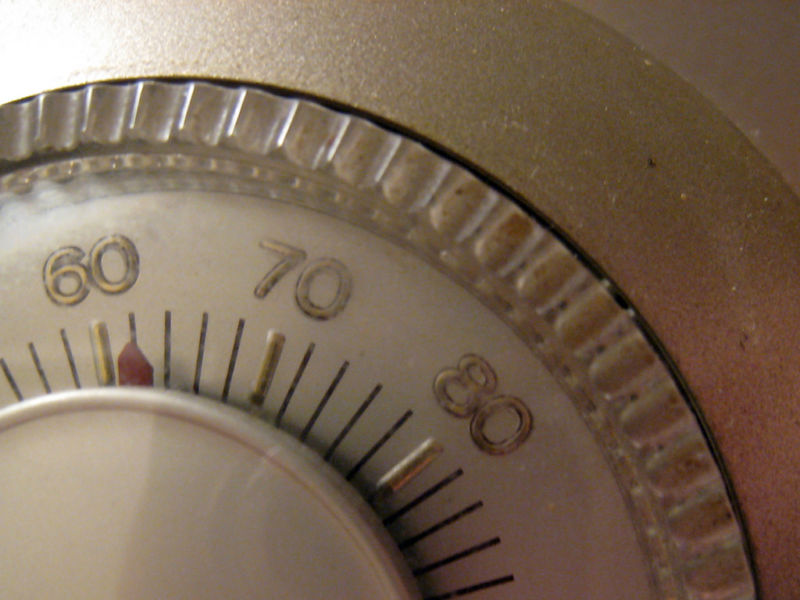
Not all electricity is created equal. Utilities prioritize getting power from the cheapest sources available. That means that, as use rises to what's typically a mid-afternoon peak, utilities end up sourcing ever more expensive supplies of electricity. By the time we reach the use typical of a late afternoon during a heat wave, the utilities have to call in the most expensive forms of power around—typically, the oldest, least-efficient, and most-polluting plants.
So cutting down on energy use during these peak demand events is in a utility's interests. And, since it's an economic problem, a lot of the solutions have also been economic, like setting higher electricity rates during these times to encourage customers to cut back on use. But a new study suggests that something as simple as a gentle reminder to customers can have a noticeable effect, and stacking reminders can have as much of an impact as raising power prices by 70 percent.
A gentle nudge
We've done studies of how people change their energy use in response to economic incentives before, but the effects have generally been pretty small. If you've ever been confronted by a confusion of possible calling/data plans and can't be bothered to figure out which one is the best deal, you probably understand why—the economic incentives often aren't large enough to drive much interest. That's especially true of things like heat-wave-driven electricity peaks, when any altered pricing is likely to last just a few days.
Instead, this new work focuses on insights from behavioral research. There's a growing body of evidence that, in a variety of situations, most people have a good idea of what they should be doing, but they don't always remember or feel sufficiently inspired to do it. In these cases, gentle reminders—"nudges" in the terminology of the field—can be enough to get many people to act. For example, there's now a large body of research that shows that a simple automated text message can help people take their medication on schedule.
The specific question this research was looking at was whether nudges could be additive. In other words, if you nudge customers twice, are more of them likely to act, or does the nudgery reach saturation?
To find out, a team of US-based researchers set up a randomized trial in cooperation with the California-based utility Opower. The utility provided a pool of more than 42,000 customers and divided them into four different pools. It also tracked the customers' energy use through a series of summertime peak load events.
For the control group, nothing changed. One of the experimental groups received a home energy report, which compared the group's use to other customers. This sort of nudge has been studied before and typically leads to a reduction in power use. Members of another group were given phone and email alerts when peak load events were expected to occur and told about how well they'd done in cutting their electric use compared to other households. A final group received both of the nudges.
A bit of change
How did it all work out? Both nudges turned out to be effective. When compared to the control users, those who received a home energy report typically had lower energy use (down by just over two percent). And, while their use went up during the peak-load events, it didn't go up enough to negate the benefit. By contrast, those who received notifications targeted to peak-load events had similar energy use to their peers but saw it drop by nearly four percent specifically during the event.
The key finding of the research, however, was that the nudges didn't saturate. The group that received both types of notifications had lower use than either of the groups that had just received one, with electricity use cut by 6.8 percent relative to controls. In fact, you could get a reasonable approximation of the behavior of the two-nudge group simply by adding up the energy savings of both single-nudge groups.
While 6.8 percent may not sound like a huge change, it's helpful to consider what any significant energy reduction means: fewer of the least-efficient, most-expensive, and most-polluting electricity generators will be used. It's also helpful to compare the nudges with the impact of economic policies, which are available from other studies. The authors estimate that, in order to create a 6.8-percent drop in usage, the price of electricity would have to be raised by 70 percent during peak-load events.
So that's a substantial difference from a relatively minor, automated intervention. And it's good news that nudges can possibly stack. But, to a certain extent, the nudges here targeted separate things: one targeted general energy conservation, while the second focused on energy use during peak load events. In fact, the data indicate that the first intervention wouldn't have been helpful for peak-load issues if it hadn't lowered general energy use outside those events. So it's not clear from this work whether you could target a single issue in two different ways and still see an effect.
The other question that still needs to be sorted out is whether the nudges saturate over time. The work only involved a single summer's worth of peak-load events, so it's hard to say whether the same households would be responsive the next year.
So, there's still plenty of work to do if we're to understand the benefits and limitations of nudging. But the work makes clear that it's well worth our time to find out.
PNAS, 2018. DOI: 10.1073/pnas.1802874115 (About DOIs).
reader comments
100